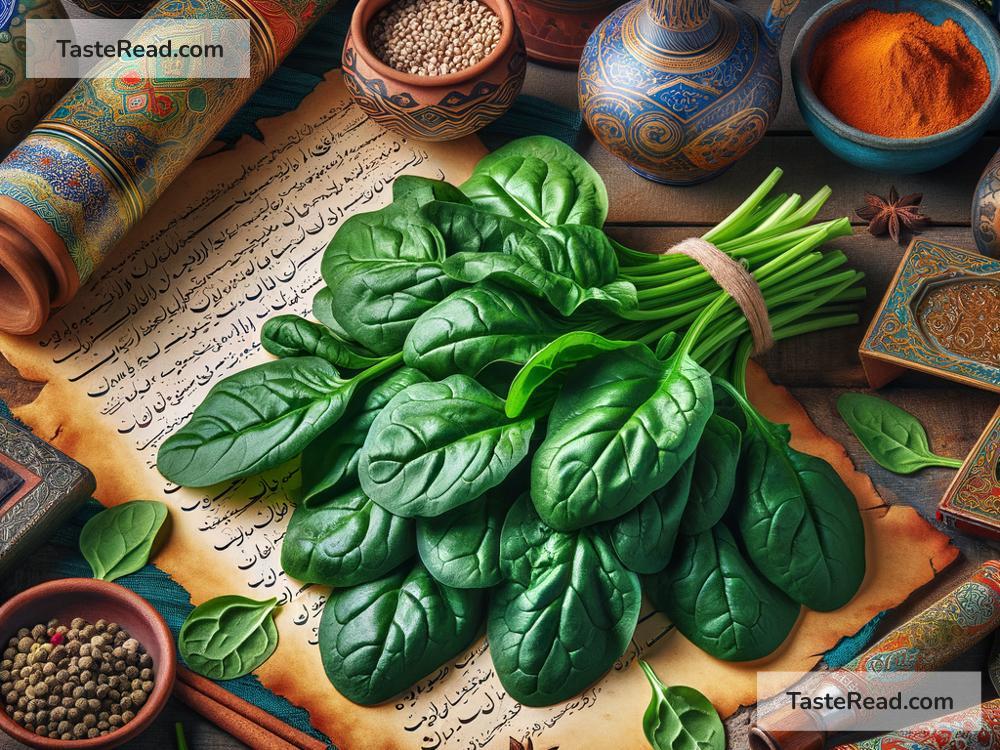The Curious History of Spinach in Ancient Persia
Spinach is a beloved vegetable known for its rich green leaves and incredible nutritional value. Today, it’s enjoyed by people all over the world, in salads, soups, juices, and countless other dishes. But did you know that spinach has a fascinating history, tracing back to ancient times? Its story begins in Persia, where this humble vegetable first grew and gained importance centuries ago.
Origins in Ancient Persia
Spinach originated in the region we now call Iran, the heart of ancient Persia. Long before it spread to the rest of the world, spinach was cultivated in this area for its hardy nature and health benefits. Persia’s mild climate and fertile soil were perfect for growing leafy greens like spinach. Farmers in this region appreciated spinach for how easily it grew and how nutritious it was.
Historical evidence suggests that spinach first appeared in Persia around 2,000 years ago, though exact dates are unclear. It was called aspanakh, a name that closely resembles the word “spinach” we use today. The ancient Persians valued spinach as much for its medicinal uses as for its food. They believed it could cure illnesses, boost strength, and improve digestion, making it a staple in their diet.
Spinach Travels Beyond Persia
From Persia, spinach slowly began to travel across borders, thanks to trade routes and cultural exchanges. Persia was a central hub for commerce and communication, connecting Asia, Europe, and the Middle East. The Silk Road was especially important in helping spinach make its journey beyond Iranian lands.
By around the 7th century AD, spinach had spread to neighboring countries like India. Indian farmers adopted the crop and began cultivating it widely. Spinach’s fame continued to grow, as more people discovered its versatility and health benefits.
Spinach Reaches Ancient China
One of the major milestones in spinach’s history was its introduction to China. During the Tang Dynasty (618–907 AD), spinach arrived in Chinese lands, brought by Persian traders. In fact, spinach was so closely associated with Persia at the time that it was often referred to as “the Persian vegetable.” The Chinese quickly embraced spinach and incorporated it into their cuisine, which already valued fresh, leafy greens.
Over time, spinach became a well-loved ingredient in Chinese recipes, from stir-fries to soups. Even today, spinach remains a common component of traditional Chinese dishes, demonstrating its long-lasting impact on their culinary heritage.
Spinach Finds Its Way to Europe
The journey of spinach didn’t end in Asia. Around the 10th century, Arab traders brought spinach to the Mediterranean region, particularly Spain. Spain, controlled by the Moors during this time, was a thriving center for culture, innovation, and agriculture. The Moors introduced spinach to the Iberian Peninsula, where it quickly gained popularity.
Medieval Europe was a time of cultural cross-pollination, and spinach benefited from these exchanges. By the 12th century, spinach was making its way into European gardens and kitchens. It was particularly admired by monks, who cultivated spinach in monastery gardens because of its nutritious and energizing qualities—helpful during fasting periods.
In the 14th century, spinach received its first written mention in European records. It was described as one of the healthiest vegetables, rich in iron and vitamins. This reputation persisted, and spinach eventually became a favorite ingredient across the continent.
Spinach Today: A Global Favorite
Spinach’s journey from ancient Persia to the rest of the world is a testament to how trade and cultural exchanges can connect people through food. Today, spinach is grown in almost every corner of the planet. It’s considered a “superfood” for its high content of vitamins A, C, and K, as well as folate, iron, and magnesium. Many people credit spinach for its ability to improve energy, support healthy skin, and even strengthen muscles (thanks to popular media, such as the cartoon character Popeye).
Though spinach has come a long way, its roots in Persia remain important. In fact, spinach is still widely cultivated in Iran, where it has been a staple ingredient for centuries. Iranian cuisine has many dishes that feature spinach, such as ash-e reshteh, a hearty noodle soup filled with vegetables, herbs, and legumes.
A Vegetable That Tells a Story
Spinach isn’t just a leafy green—it’s a piece of history. Its journey from the fields of ancient Persia to dining tables worldwide highlights the interconnectedness of civilizations. It reminds us that the foods we eat today often have deep historical roots, shaped by centuries of trade, migration, and innovation.
So the next time you enjoy a spinach salad or a savory spinach stew, take a moment to think about its fascinating journey. From Persia to China, then Europe and beyond, spinach truly has a story worth sharing—one that spans thousands of years and countless cultures. It’s amazing how something so simple can carry so much history.


